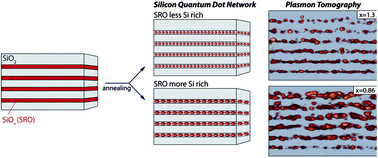Three-dimensional imaging for precise structural control of Si quantum dot networks for all-Si solar cells†
Abstract
All-Si tandem solar cells based on Si

* Corresponding authors
a
School of Applied and Engineering Physics, Cornell University, Ithaca, USA
E-mail:
lena.f.kourkoutis@cornell.edu
Fax: +1 607 255 7658
Tel: +1 607 255 9121
b Kavli Institute, Cornell University, Ithaca, USA
c
Australian Centre for Advanced Photovoltaics, University of New South Wales, Sydney, Australia
E-mail:
ivanpw@unsw.edu.au
Fax: +61 2 9385 7762
Tel: +61 2 9385 6056
All-Si tandem solar cells based on Si

 Please wait while we load your content...
Something went wrong. Try again?
Please wait while we load your content...
Something went wrong. Try again?
L. F. Kourkoutis, X. Hao, S. Huang, B. Puthen-Veettil, G. Conibeer, M. A. Green and I. Perez-Wurfl, Nanoscale, 2013, 5, 7499 DOI: 10.1039/C3NR01998E
To request permission to reproduce material from this article, please go to the Copyright Clearance Center request page.
If you are an author contributing to an RSC publication, you do not need to request permission provided correct acknowledgement is given.
If you are the author of this article, you do not need to request permission to reproduce figures and diagrams provided correct acknowledgement is given. If you want to reproduce the whole article in a third-party publication (excluding your thesis/dissertation for which permission is not required) please go to the Copyright Clearance Center request page.
Read more about how to correctly acknowledge RSC content.
 Fetching data from CrossRef.
Fetching data from CrossRef.
This may take some time to load.
Loading related content
